The first part of the 2018-19 NHL season was dominated by William Nylander talk. Talk about his contract, talk about offer sheets and talk about possible trade options. That tireless cycle finally came to an end on Dec. 1 when the Toronto Maple Leafs signed Nylander just before the five o’clock deadline.
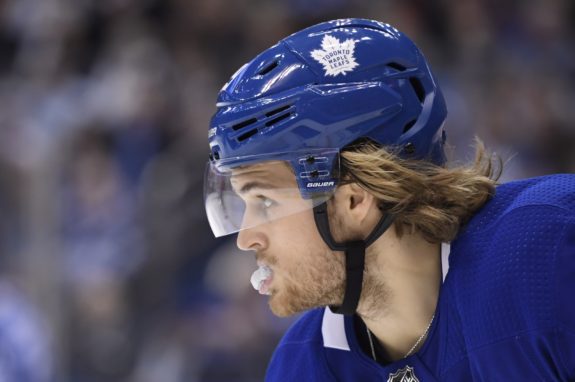
This chaotic process was just a sampling of what’s to come in the offseason. Although July 1 is still far off, it’s important to be ready for the coming frenzy. The crop of young talent that is set to become restricted free agents (RFAs) is astounding and the best RFA group that I can recall.
Many teams have prepared for this by leaving a sizable chunk of cap space available this season in preparation for signing their young stars in the offseason. And some teams without any notable RFAs may leave the cap room for a possible offer sheet. Despite their rarity, if a team is to ever submit one it’d be this offseason.
It might be overstated, but there will be massive changes around the NHL. Either from trading players to make room for star players or possibly from offer sheets. Regardless, this RFA class is going to push the industry standard cost for a top line player through the roof.
2019-20 Restricted Free Agent Class
This group of RFA players are going to set the new standard for contracts in the NHL. There are lots of factors that players, agents and general managers use to figure out a player’s worth from age, position, points, comparable players and percentage of the salary cap.
The NHL is projecting a salary cap of roughly $83-million for next season, per Gary Bettman.
— Chris Johnston (@reporterchris) December 3, 2018
With the salary cap set to rise from $79.5 million to around $83 million, teams will have some extra room to fit their RFAs under the cap. The problem with a continually increasing salary cap means that player contracts also increase to stay in line with comparable contracts. Meaning if an RFA is comparable to a player with a $10 million cap hit then the RFA would ask for $10.5 million or even $11 million since the cap ceiling has increased.
Who are the players to keep an eye on during this season?
- Mikko Rantanen (Colorado Avalanche) 38 GP 60 P
- Mitch Marner (Toronto Maple Leafs) 37 GP 50 P
- Brayden Point (Tampa Bay Lightning) 38 GP 49 P
- Matthew Tkachuk (Calgary Flames) 38 GP 42 P
- Sebastian Aho (Carolina Hurricanes) 36 GP 39 P
- Timo Meier (San Jose Sharks) 36 GP 34 P
- Auston Matthews (Toronto Maple Leafs) 23 GP 34 P
- Patrik Laine (Winnipeg Jets) 37 GP 30 P
Those are the top eight RFAs by points. There are other RFAs of note around the league but these eight are the ones that’ll draw the most attention, especially since they are all coming off their entry-level contracts. In the past, many young stars would take bridge deals or leave money on the table to help their team under the assumption that they’d be compensated in their next contract.
Unfortunately, that led to instances like P.K. Subban with the Montreal Canadiens or players like John Tavares and Tyler Seguin being considerably underpaid. In the end, they all got great deals but they spent most of their early career making less than they should have.
If the Nylander saga has taught us anything, it’s that players aren’t going to wait around to make what they’re worth anymore. Their career only lasts so long and taking a discount deal early on will leave millions on the table that they can’t get back.

With the point pace that all these players are playing at it wouldn’t be a shock to see a few make more than $10 million or even closer to Connor McDavid’s cap hit of $12.5 million. The front-runner for the biggest contract would be Rantanen as his 60 points in 38 games puts him on pace for 129.56 points over the 82-game season, which would be the most points in the NHL since Mario Lemieux’s 161 points back in the 1995-96 season.
NHL Teams in a Cap Crunch
With an impending payday, there are a couple of teams that are going to struggle to keep most of their roster together and be under the salary cap when they sign their RFAs. These are teams that are going to have some tough negotiations and decisions to make, but it looks like all of these teams will need to make a trade to free up their cap space.
Calgary Flames
Calgary has just under $2 million in cap space this season and will have around $6 million to work with next season with the increased salary cap. Their big RFA to sign is Tkachuk who has 42 points in 38 games. Not only is he having a career season, but he’s close to matching his previous season high of 49 points in 68 games.
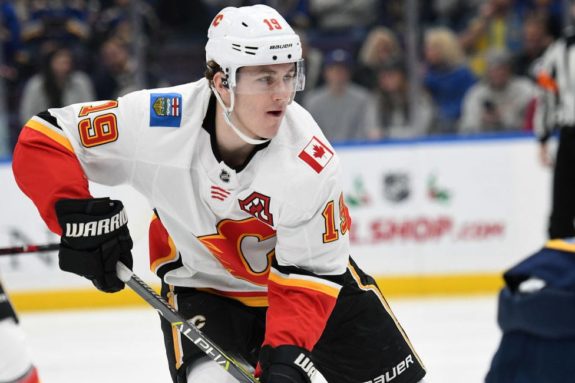
With how important he’s been to the Flames and how well he’s producing this season, it wouldn’t be surprising if Tkachuk signs for around a $9 million cap hit. It might be close on the cap, but with Mike Smith’s $4.25 million contract coming off the books it shouldn’t be an issue. The problem for the Flames is finding the money for David Rittich or another goalie.
To make room, it wouldn’t be surprising to see Calgary try to unload the contract of either James Neal or Michael Frolik since neither are playing to expectations.
Tampa Bay Lightning
At this point in the season the Lightning are all but a lock for the winning the Presidents’ Trophy, but how much of this super team can they keep together after this incredible season?
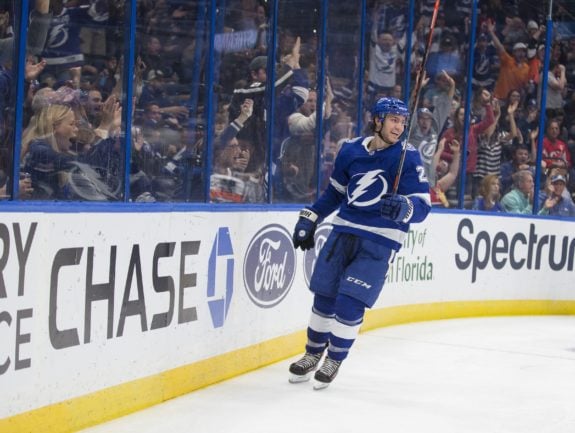
The Lightning’s main focus will be on signing Point to a new deal. With 49 points in 38 games, which is second in team scoring behind Nikita Kucherov’s 61 points, he is going to give management some trouble. Point would likely look for a deal similar to Kucherov’s extension of $9.5 million, which means the Lightning will need to lose a defenseman and trade a forward.
Tampa Bay has $1.8 million in cap space and will have around $5.8 million when the cap increases, but they have a few issues to deal with. The first is all their unrestricted free agent (UFA) defensemen, Anton Stralman, Braydon Coburn and Dan Girardi. If they let all three walk to free agency it would free up $11.2 million in cap space at the cost of their defensive depth.
The other issue is that three players have extensions kicking in next season with Kucherov going from a cap hit of $4.76 million to $9.5 million, Yanni Gourde’s cap hit going from $1 million to $5 million and Ryan McDonagh going from $4.7 million to $6.75 million. Those extensions increase their cap hit by around $10.7 million, which would basically negate the savings from letting those defensemen go.
So Ondrej Palat or Ryan Callahan will have to be traded for the Lightning to sign Point to a new contract.
Toronto Maple Leafs
Surprisingly, the issue for the Maple Leafs isn’t signing Matthews or Marner, but their other RFAs, Kasperi Kapanen and Andreas Johnsson.
Right now, the Leafs have $5.3 million in cap space but will have around $9 million with the cap increase. They will also have an additional $3.3 million in cap room thanks to Nylander’s contract which goes down in cap hit next season because he signed midseason. Then there’s Jake Gardiner and Ron Hainsey who make up about $7 million and are set to become UFAs.
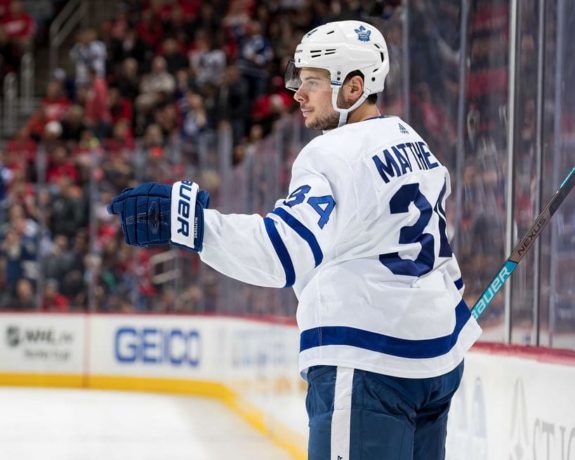
The Maple Leafs can sign Matthews and Marner, but it might be at the cost of other players. With how Kapanen and Johnsson have played, they will both be deserving of raises, but the Leafs might not be able to keep them unless they can move Patrick Marleau’s contract of $6.25 million or maybe even Nikita Zaitsev’s contract for $4.5 million if they give up a high draft pick or prospect. Regardless, someone has to go because Marner and Matthews are irreplaceable.
Winnipeg Jets
Winnipeg is the last team on this list with new contracts needed for Laine, Kyle Conner and Jacob Trouba.
The Jets have $6 million in cap space and will have $10 million in space next season if the salary cap goes to $83 million. I would expect all of that to go towards Laine’s contract as his starting number would likely be $10 million, so the Jets will need to make room for Connor and possibly Trouba if he gets a raise over his current cap hit of $5.5 million.
The likely scenario is that Tyler Myers walks in free agency and frees up $5.5 million and if Connor signs a deal similar to Nikolaj Ehlers’ $6 million cap hit, then they could make it all work, assuming one or two depth players are let go.
Will We See an Offer Sheet Again?
If an NHL team is to submit an offer sheet, it has to be this offseason. There are a ton of talented RFAs and most teams that need to re-sign their player won’t have the room to overpay to match an offer. Offer sheets have been rare, Dustin Penner’s in 2007 was the last to be accepted. There have been offer sheets since, but all have been matched with the most notable being the Shea Weber offer sheet.
Part of the reason offer sheets are rare is because it may hurt the relationship between general managers, but the main reason is from the cost of draft picks for extending an offer sheet to a player. Most people would expect superstars like Laine or Matthews to receive offers, but I think a more likely scenario would be players in the middle of the lineup like Kapanen for the Maple Leafs or Connor for the Jets.
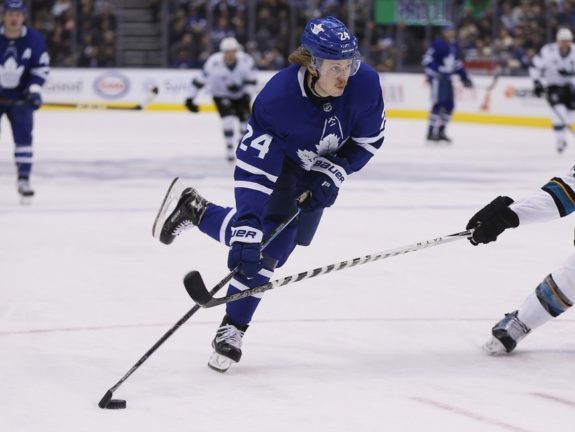
There are a couple teams that would have the cap space to overpay to extend an offer sheet, but with the high cost of draft picks and the fact that players have to sign and accept the offer first means that such offers are not something that’s used in the modern cap era.
There is going to be a lot of buzz around these RFAs and the possible trades and offer sheets that come as a result. These players are going to set the standard for the next generation and it’s going to put these teams in a tough position, as they are going to expect to be paid what they are worth and not wait half a decade to finally get their due.